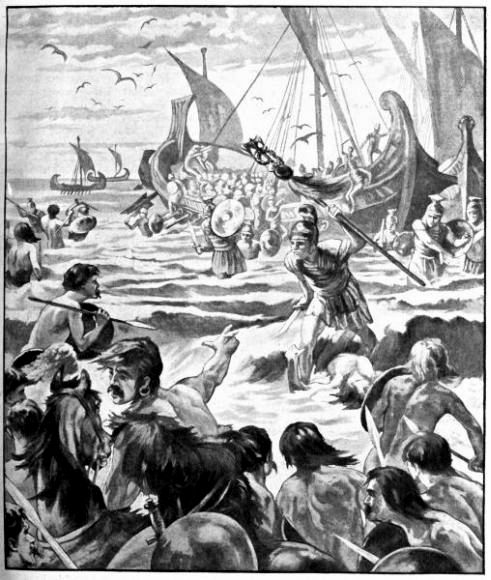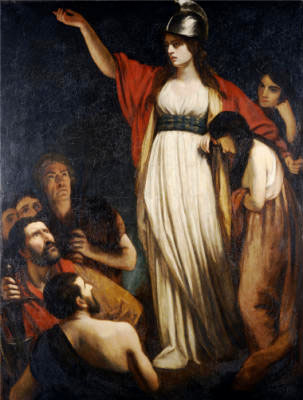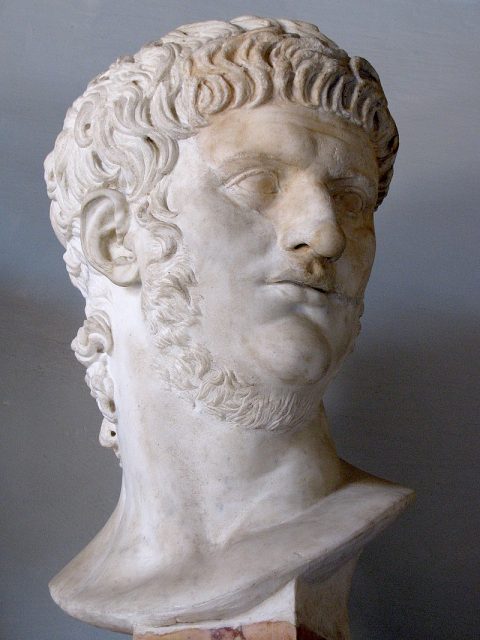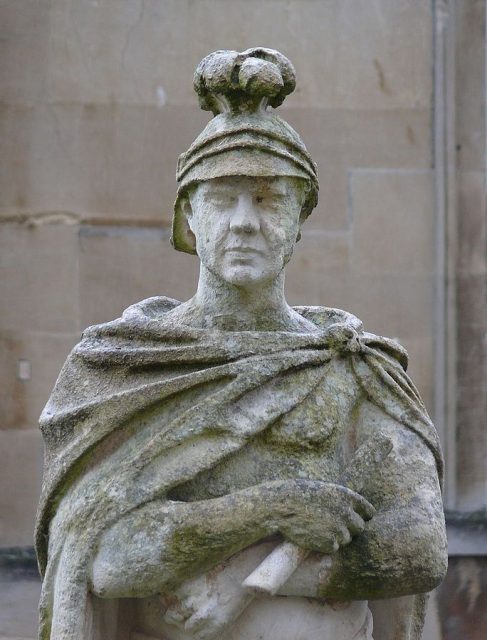Arminius, born in the Germanic territories and forced to become a Roman soldier, never forgot his past and decided, when the chance came, to fight against Rome. Arminius took an important step to stop the expansion of the Roman Empire on the continent, becoming the first to defeat and expel the Romans from his homeland.
Arminius’ crushing victory in the Battle of the Teutoburg Forest (9 AD), was a shocking blow to Rome and changed the course of Roman history.

In 21 AD, the Roman Empire completely abandoned the campaign in the Germanic territories, establishing its border to the east of the Rhine river. But the Roman Empire was extremely expansionist, basing its strength on the conquest of territories, subjugating the inhabitants and seizing their resources.
Expelled from Germania in the east, the empire set its sights on one of the last territories that was not under its complete domain: Britannia.
A place full of mystery for the Romans, with important resources (gold, silver, slaves, grains) for their empire, this was enough reason to send 40 thousand men on a new campaign of conquest in 43AD by the order of Emperor Claudius.
The Conquest of Britannia

During the previous 100 years, the Romans had tried on several occasions, beginning with the incursions of Julius Caesar, to gain control of the island, but always came up against great resistance from the indigenous Celts, fierce warriors who painted their body blue to intimidate opponents.
However, the Celts, despite challenging the Romans, lacked resources and military training, something that Romans did not suffer. The result of the conquest campaigns in 43 AD was overwhelming. The Romans, in just 2 years, controlled the southern half of the island.
Conquered – Submission and Romanization

In view of complete Roman superiority, some tribes decided to cooperate, being forced to declare the Roman emperor, in this case, Nero, as co-heir of their lands. Although at first sight it looked to be unfavorable treatment, this guaranteed not just survival, but also allowed the local rulers to remain on the throne.
This was the case of Prasutagus (husband of Boudica), King of the Iceni, a small tribe from the southeast of Britannia.
Iceni Tribe

The Iceni were a Celtic tribe that inhabited part of the Eastern region of present-day England, specifically in the county of Norfolk. The nobility was characterized by wearing torcs, heavy necklaces designed to be worn around the neck and shoulders. Most torcs were made with gold or silver.
Iceni women (and generally all Celtic women) had superior rights compared with contemporary Greek and Roman women. They could inherit, manage their property, divorce and even govern.
Death of the Iceni King 60A.D. – Prasutagus
Prasutagus, in his will, gave half of his possessions to the emperor Nero in an attempt to gain his favor and preserve his daughters on the throne of the Icenis. But Rome did not have the smallest interest in honoring the last will of Prasutagus. They did not consider in any way that the kingdom could be ruled by his daughters, and therefore the legitimate heir was unquestionably the Emperor. The procurator Cato Deciano was ordered to seize all the assets of Prasutagus to honor the debts contracted.

Boudica, Queen of the Iceni and a woman of great courage, refused and tried to resist. The punishment for this “insolence” was exemplary and cruel. Boudica was whipped in public and her daughters raped by Roman soldiers. Many of her nobles were enslaved and the lands and their possessions confiscated. Boudica swore to take revenge for the treason of Rome.
Boudica
The little that is known about Boudica is due to the Roman historians Tacitus and Dión Casio, They describe her as a long red haired warrior of great intelligence and charisma, tall and strong, with a severe look and an authoritative voice. Her name means Victoria in the Celtic language.
Emperor Nero’s ambition
The Emperor Claudius Cesar Nero, greedy for riches, set his sights on Britannia and total control of the island and its treasures. To fulfill his objective, in the year 60AD he designated as Governor of Britannia the General Cayo Suetonio Paulinus.

In 61AD, Paulinus mobilizes 10,000 legionaries to the Isle of Mona with the intention of killing the druids, the political and religious advisors of the Celtic tribes. The druids served as communicators with the gods. Paulinus was merciless and druid priests, women and children were killed.
The Mona campaign left the principal Roman urban centers in Britannia without protection, and Boudica knew it.
Boudica – The beginning of Her Rebellion
While General Paulinus was in North Wales directing the operation on the Island of Mona, in the east of Britannia, in a consensus between the main Celtic tribes (Trinovantes, Catfish, Catuvellaun, Iceni), Boudica was chosen as the leader to face the Romans, giving rise to their rebellion.
Camulodunum, located in the southeast, was the capital and administrative heart of the Roman Empire in Britannia, was the first target for Boudica. With Paulinus on Mona, the city was virtually unprotected, without ramparts and defended only by a small number of veteran soldiers. It was a massacre.
Boudica wanted to send a message of terror to all the borders of Rome. She devastated the city in a way the Romans had never before suffered in their history. The few survivors took refuge in a temple they built in honor of the late Emperor, Claudius. Boudica had no mercy and set fire to the temple, regardless of the fact that there were women and children inside.

In response, Rome sent troops from Londinium. A city poorly defended with some veteran soldiers was one thing, but it was quite another to face a detachment of legionaries. However, using guerrilla tactics, Boudica defeated them.
This left the road free for Boudica to attack Londinium, the trade center of the Roman Empire in Britannia and Verulamium. She and her army devastated both cities. A great portion of the population fled before the attack; those who remained were brutally killed. Paulinus hurried to help but reached Londinium too late. He arrived to see it burning.
Despite the successes obtained by Boudica, weeks later Paulinus decided to confront her. By this time, however, Boudica had an army without supplies.
The Fall
Paulinus, an expert in military tactics, designed a plan that forced the Celts to cross a narrow passage. Like King Leonidas and its 300 Spartans in the Thermopylae, in this way General Paulinus, with just ten thousand legionaries of the 14th Roman legion eliminated the numerical advantage of Boudica, who had an army of more than one hundred thousand men (although all these men were without armor and many did not even have military experience).

The battle strategy had three simple parts. First, the legionaries launched their “pilum” (a javelin) against the Celts. Then, the Roman infantry managed to resist the onslaught of the Celts. Finally, the cavalry of General Paulinus attacked the Celts on the flanks. When seeing themselves lost, Boudica and her army tried to retreat, but the disposition of its own chariots and camps made it difficult to execute a withdrawal.
The Roman cavalry managed to envelop the rebels, who were then massacred without mercy. Very few survived the encounter.
Read another story from us: Prelude to Fall of Rome – The Destruction of Carthage
The fate of Boudica is not clear. She either decided to poison herself after the defeat or she fell in battle, but her legacy continues to this day, as an example of courage against tyranny.
